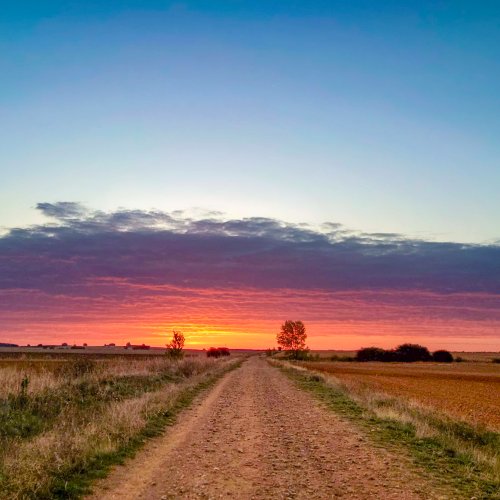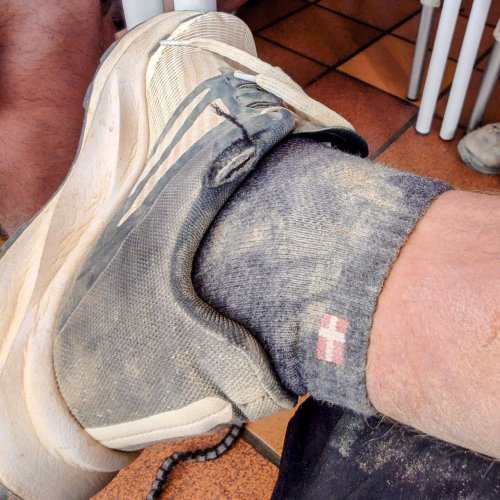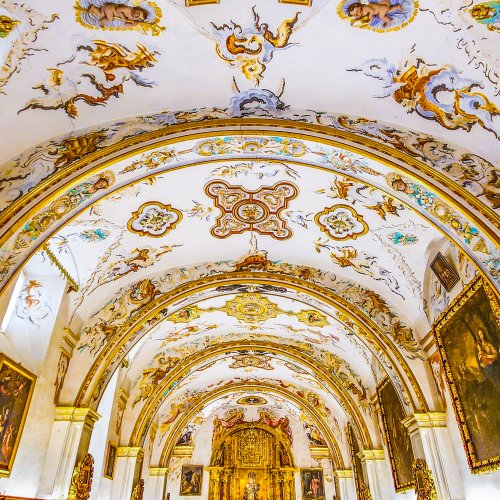I have found this a challenging post and thank the OP for provoking (intentionally or otherwise) such vigorous debate. I think it has morphed somewhat from what was asked to essentially from when to “Who is a Pilgrim ?” and I have reflected for a number of days on my own experience. What draws me back to walk a camino ? Why do I feel a difference walking to Santiago and shortly thereafter walking to Finisterre & Muxia ? These are my thoughts for what they are worth and are not meant as criticism (especially of anyone generous enough to serve as a hospitalero who makes a decision in accordance with the direction they are provided) or to cause any offence and apologies for the verbosity.
I think the question has (unusually) a simple answer. Someone who goes on a pilgrimage. That leads to the more difficult question; what is a pilgrimage ? I have read the various definitions proffered. I have struggled with any definition (Wikipedia) that doesn’t include a destination. Surely the point of a pilgrimage is to go somewhere ? While a wander in the wilderness for 40 days maybe considered a journey of self-discovery or enlightenment and undoubtedly spiritual, I personally find it too esoteric to be termed a pilgrimage. It’s akin to the recent interview of a B grade actress speaking “her truth”. She may have a version of events but there is the truth and then there is not. While the journey is to me critical, and to many the essence, surely the destination is the point ? If it were not, why is there so much emotion exhibited daily in Plaza de Obradoiro ?? How many of those new arrivals interviewed on camino Day 1 would give the same answer to the question in the Plaza?
Clearly a pilgrimage is historically of a religious nature, but as language has morphed it now may be more spiritually based. Perhaps a good example would be the “pilgrimage” of thousands of antipodeans to the battlefields of the Dardanelles each April. Having said that, I have heard many describe it as a pilgrimage in sacred terms, but I cannot recall anyone calling themselves a pilgrim who has done so. The term pilgrim and pilgrimage are used loosely akin to someone today being described as a “crusader”.
So what does this mean for us on a Camino ? Well the destination of Santiago is historically one of the major Christian pilgrimage sites in the middle ages as we know. It was traditional to walk out the door to the destination
and then to walk back – who does that ? Is that the true pilgrim some have spoken of ? The routes taken were not prescribed and changed with time, hence the plethora of options we have today especially in Northern Spain. There was no 100km minimum distance. Tradition tells us St James returned by boat with some associates to a point only about 25km south of his current resting place – the original camino ? There were no designated start points like SJPP – a modern construct. So a lot of the debate on distance walked, pack carriage even modes of transport I find somewhat irrelevant to being termed “a pilgrim”. Certainly there were no bikes or other forms of mechanical transport. So what ? Well I therefore find it unnecessary to get wrapped around the axels over the label “Pilgrim”. I find it particularly interesting the enthusiasm for the label from those who state they are non-religious or those that are not intending to venerate the bones of St James at Santiago. Why be bothered ?
I think we all agree (and this discussion/forum affirms) that there is something special about a Camino that comes not from collecting stamps on a credential or being awarded a compostella. We talk about the “camino providing” but it doesn’t does it. It is the people on the trail, regardless of label, that provide in a spirit that I’ve not found on any other walking trail short or long. A spirit of humanity and generosity of spirit, dare I say it living the central Christian tenant of doing unto others…. Perhaps the focus on pieces of paper and labels means we overlook that point and end up turning away genuine humans in need ? We have all witnessed, I’m sure, first hand compassion, selflessness and kindness to total strangers that leaves you reinvigorated in humanity and makes you wonder what changes when we all go home ?
So to all my fellow “Caminoists” (some of whom may also be Pilgrims) what does it matter what you are called ? Focus on your raison d’etre and the spirit of the Camino, forget the labels, forget the judgements and worrying over who really is a true pilgrim and keep it simple. In the words of someone known to St James, just “pick up your mat and walk”.
PS Christianity does not belong to the Roman Catholic faith and the veneration of a Saint’s bones is not the preserve of the catholic faith. Pilgrimage is not limited to Catholicism or for that matter Christianity. Ask a Hindu at the Ganges, or a Muslim circling the kabala at Mecca.
PPS What is a “non-practicing Athiest” ?? (@ Antonio Vaessen) Or for that matter what does someone do if they are a practicing Athiest





















